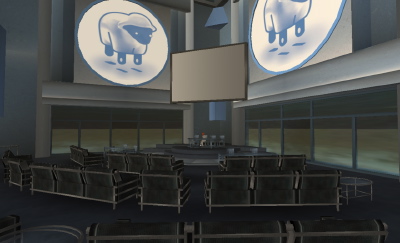From a strictly Internet-ish view, Second Life is mostly the protocol, but this is just a recent way of looking at it, because what we experience as “Second Life” is, today, thanks to OpenSim, not only a set of viewers and simulators created by Linden Lab. As third party clients are able to connect to LL’s grid, or LL’s clients are able to connect to non-LL grids, it’s clear that the unifying thread is, indeed, the protocol. In that regard, it is quite similar to the Internet itself: the vague notion of “a network of networks” is mostly possible because there are a set of protocols that allow that interconnection — if you support the standardised Internet protocols, your network can connect to anyone else’s network; your application can connect to any server; and so on.
But the difference is that SL, of course, is also very small when compared to the 2 billion users of the Internet. This means that we still talk about the community of users because they share something in common which is frankly unique. Even if it’s more correct to talk about communities of residents (and not really a community of SL users — there are many), it’s also true that we do share some things in common.
For example, we share the concept that all content created in Second Life is tagged with the author’s avatar name, which shows who owns the original intellectual property rights on that content. It also shows, for a specific object, who “owns” it — or, more precisely, who has obtained a license to display that content. And this license can have several forms: it can range from free and open source (which we call “full perms”) to closed source and single user license (e.g. no copy, no mod, no transfer), with a lot of variations in-between, and the added bonus of licensing being possible to individuals or shared with groups.
No matter how differently we experience Second Life — depending if we’re role-players, immersionists, augmentationists, entertainers, content producers, consumers, or merely visitors — that characteristic, that content inside Second Life retains intellectual property rights, is a shared element of all residents.
You can contrast that with the-Internet-at-large, where every content published there has no real intellectual property rights attached to it and enforced by the “system” (whatever the system might be). You can just make claims over your intellectual property on the Internet, but not actively enforce them except through lawsuits. Put it into another words: the difference between the Internet-at-large and Second Life is that all content on the Internet is freely available — what you see is what you can copy — while the Second Life Protocol can enforce the intellectual property. Well, at least to an extent, of course — the analogue hole will obviously always allow content to be copied. But it’s part of the Second Life culture to “live” in a world where, in general, you can count on a certain degree of protection of your copyrighted content.




